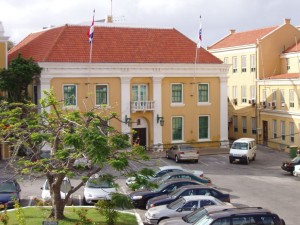Mission Accomplished, Army Continues To Phase Out Presence SXM-hurricane_militaryPHILIPSBURG - The Netherlands Army mission to provide assistance to the St. Maarten Police Force to stop looting after Hurricane Irma and to safeguard essential areas on the island is complete and military personnel have been deploying back to their stations throughout the month of October. By November 1, St. Maarten will have 700 fewer military personnel on its shores. “The stationed St. Maarten Dutch Army personnel will remain on island and will go back to their regular training,” said Netherlands Army press officer Captain Nick Huijsmans on Monday. He said he was proud of the Army members who had responded to the call for assistance from the island and had done their jobs very well. In the days following the passing of Hurricane Irma on September 6, the security situation was a big issue. Looting and robbery incidents were plaguing both sides of the island. The Army was given the mandate to do everything in its power to stop these incidents and its personnel were effective in preventing or stopping looting and robberies. Groups were deployed specifically to assist police, stand guard at curfew locations, rebuilding vital buildings and guard the Pointe Blanche prison. The Ministry of Interior Affairs has taken the lead now and is responsible for continued Dutch assistance, according to Huijsmans. The Army personnel conducted 226 saw jobs, 216 small repairs and 163 roof repairs during their time on island. Huijsmans said he finds it impressive how businesses and the people bounced back from the devastating hurricane and he hopes they continue in a positive direction. “The normal training that is done on an annual basis for preparedness for major hurricanes by Government and emergency services needs to be stepped up. It was a category 5-plus hurricane, but we have an idea now of how it can get. The key is to prepare better and have a quicker response to the devastation,” he said. He took the opportunity to thank hotel property owners and staff for extending their hospitality to the hundreds of Army personnel that are and were on-island. “That saved us a lot of time to focus on rebuilding damaged buildings and not having to fix tents for us to stay in. We thank you for your hospitality. Last, but not least, some schools allowed us to stay in their classrooms while we repaired their facilities. Thank you and I hope to be back to the island within the next five years to see the progress the island has made since the dreadful day of September 6,” said Huijsmans. He said the island will be back to normal only if every single resident contributes towards building back the island. He also said the cooperation with the law enforcement agencies while in St. Maarten had been very good and wished them all the best. The Army Engineers on-island have completed the task of building workable showers for emergency shelters in the Festival Village and will work on emergency homes next. “The plan is to place the emergency home near the actual home of the person who lost their home and allow them to stay in the emergency house until they’ve completed rebuilding their homes. The emergency home will then be removed from the homeowner’s property,” stated Huijsmans. He said he wishes the island residents the best of luck and is confident that the island will be better than it was before if everyone contributes.
Trade Unions Demand Higher Christmas Bonus
 WILLEMSTAD - The unions want a net Christmas bonus of 500 guilders. Now it is 135 guilders gross. The unions believe find that the civil servants have already sacrificed enough, the 135 guilds was supposed to be temporary.
WILLEMSTAD - The unions want a net Christmas bonus of 500 guilders. Now it is 135 guilders gross. The unions believe find that the civil servants have already sacrificed enough, the 135 guilds was supposed to be temporary.
In April, the unions still demanded 250 guilders, but that demand has now been increased. The request has already been submitted to the Minister of Finance, Kenneth Gijsbertha.
The chance that the demand will be honored looks small. Curaçao has a deficit of 30 million guilders in its budget.



Comments
Post a Comment